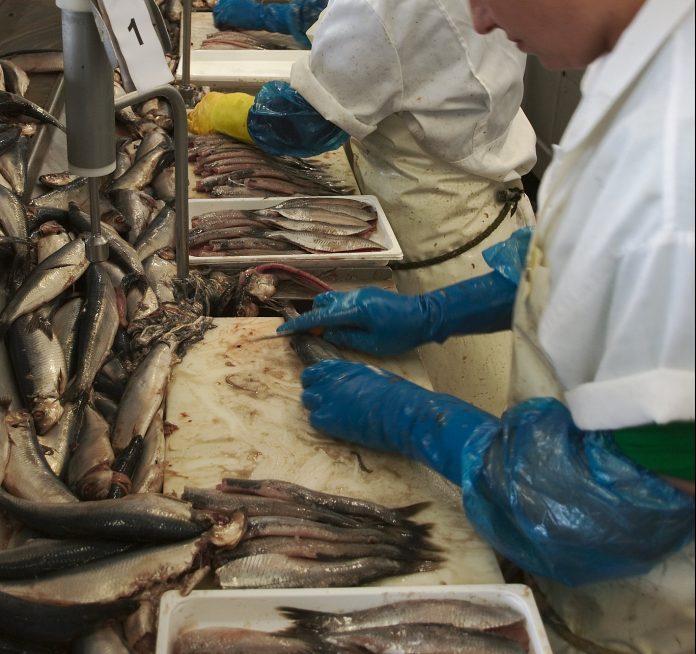NoVAqua has demonstrated the potential of extracting important nutrients from the process waters.
When fish such as herring are filleted and preperared in processing plants or when shrimps and mussels are boiled, a lot of wastewater is generated. Approximately 7000-8000 liters of water is used to prepare a ton of marinated herring. a whopping 50,000 litres of water is needed per ton of peeled shrimps, or per three tons of raw shrimp. As it currently stands, all of this goes to waste.
Waste not want not
But according to the research project from Sweden’s Chalmers University, the water – which contain proteins, peptides, fats and micronutrients, can be recycled and used, as an ingredient in feed or for growing microalgae.

Side streams
The project, “Extracting Novel Values from Aqueous Seafood Side Streams” or NoVAqua for short is coordinated by Professor Ingrid Undeland of the Department of Biology and Biological Engineering at Chalmers University of Technology. It was started in 2015 with funding from Nordic Innovation, an institution that works to promote cross-border trade and innovation between the Nordic countries.
”It’s very important to help the industry understand that the side streams don’t need to be wasted. Instead, they should be treated as really exciting raw material,” said Professor Ingrid Undeland.
“The backbone of our project is a circular approach. In the past, we had a more holistic view on handling of food raw materials, but today so much is lost in side streams. Furthermore, we are in the middle of a protein shift, and there’s a huge demand in society for alternative protein sources.”
Skretting ARC
Using a two-step process, the research team managed to recover up to 98 percent of the protein and 99 percent of the omega 3-rich fats. The process resulted in a semi-solid biomass and a nutrient-rich liquid. After dehydration, biomass from shrimp boiling water was shown to contain 66 percent protein and 25 percent fat. Two tests were made, together with the University of Gothenburg and with Skretting ARC (Aquaculture Research Centre) using this new biomass as an ingredient in feed for salmon, and the results showing promising results.
The liquid was shown to be more effective than water as a protective glaze to help keep frozen fish from spoiling.
The work is continuing project under the new guise of AquaStream, funded by the European Maritime and Fisheries Fund and is now aiming to implement the process within the seafood industry.

